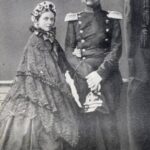What is the traditional East Asian Ideal for a Handsome Man? The traditional East Asian ideal for a handsome man has varied over time and across different cultures within East Asia. However, some common features have been traditionally considered attractive in East Asian societies.
Pale Skin:
In many East Asian cultures, having fair or pale skin has been historically associated with beauty. This is often linked to the idea that individuals with lighter skin have not been exposed to outdoor labor, signifying a higher social status.
Facial Features:
Soft and delicate facial features are often considered attractive. This includes a well-defined jawline, high cheekbones, and a straight nose. The eyes are also significant, and the ideal shape may vary, but generally, larger, double-lidded eyes are often seen as appealing.
Hair:
Dark, smooth, and well-groomed hair is often considered attractive. Traditional hairstyles and grooming practices may vary across East Asian cultures, but a clean and neat appearance is generally valued.
Expression:
A calm and composed demeanor is often preferred. Traditionally, modesty and humility have been seen as virtues, and individuals who embody these traits are often considered more attractive.
Clothing:
Traditional attire, such as hanbok in Korea, handful in China, and kimono in Japan, is often associated with elegance and can enhance the perception of a person’s attractiveness.
It’s important to note that beauty standards evolve over time, and contemporary ideals may differ from historical preferences. Moreover, individual preferences and perceptions of attractiveness can vary widely among people, even within the same cultural context. In modern times, globalization and the influence of Western beauty standards have also played a role in shaping perceptions of attractiveness in East Asia.


